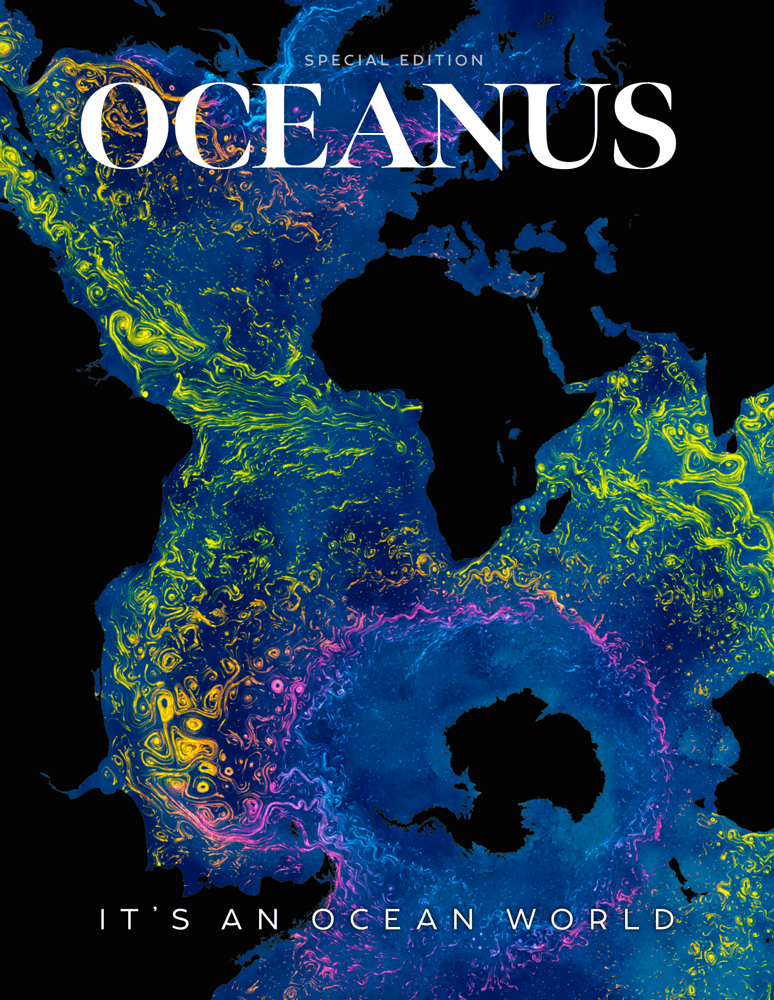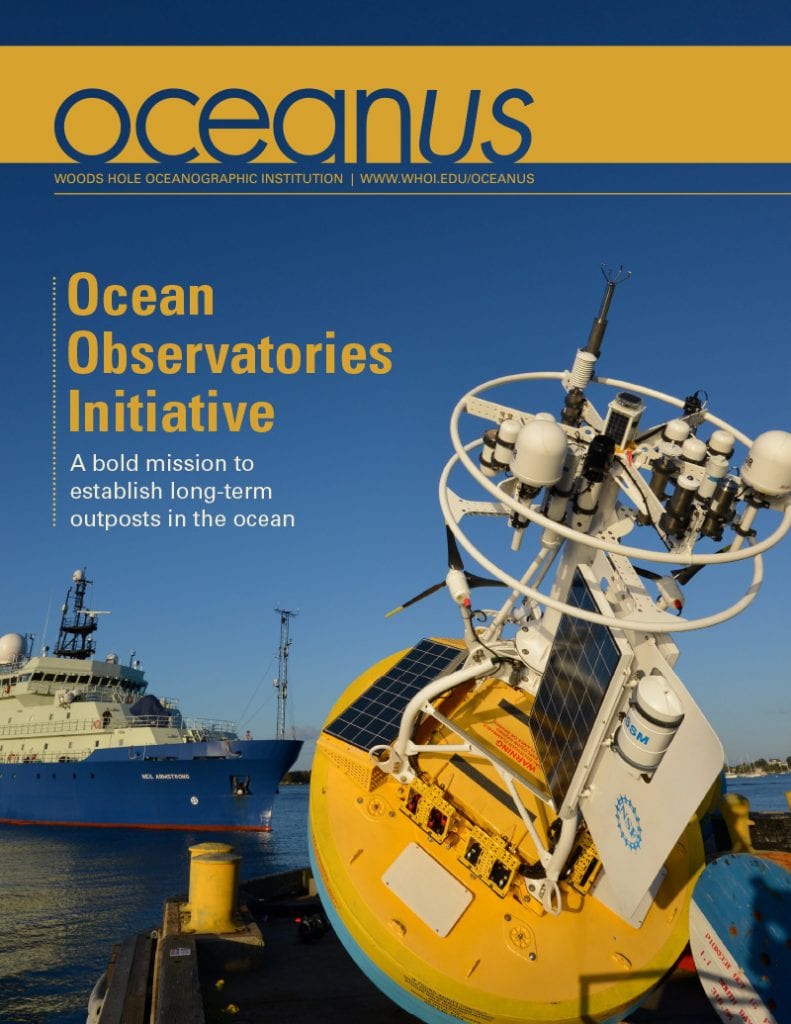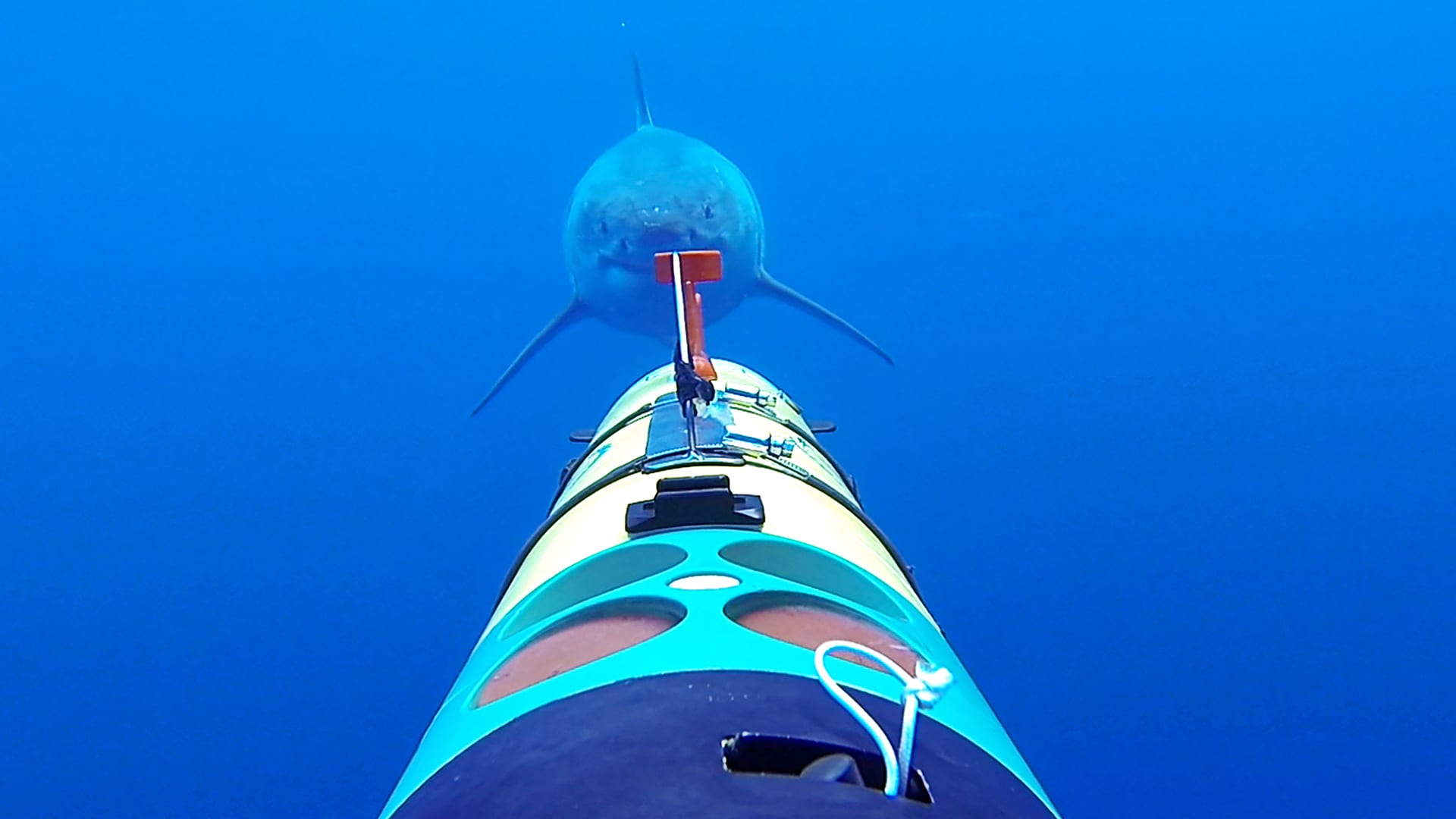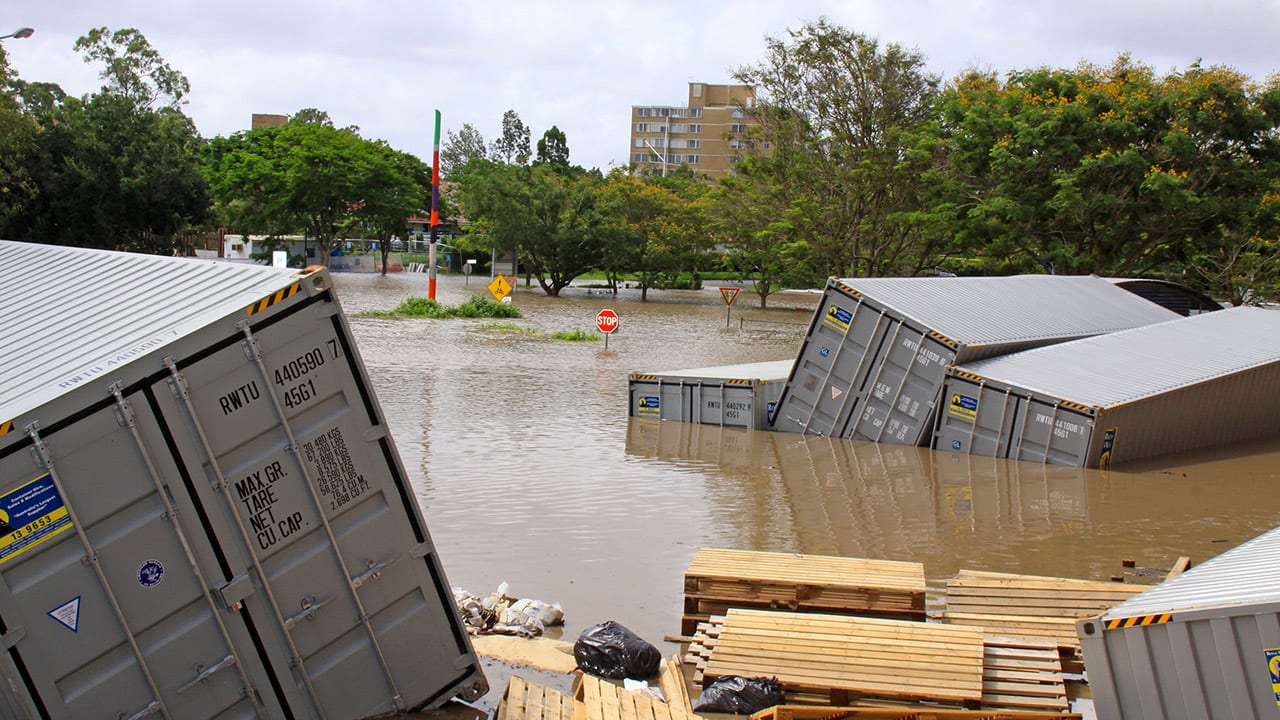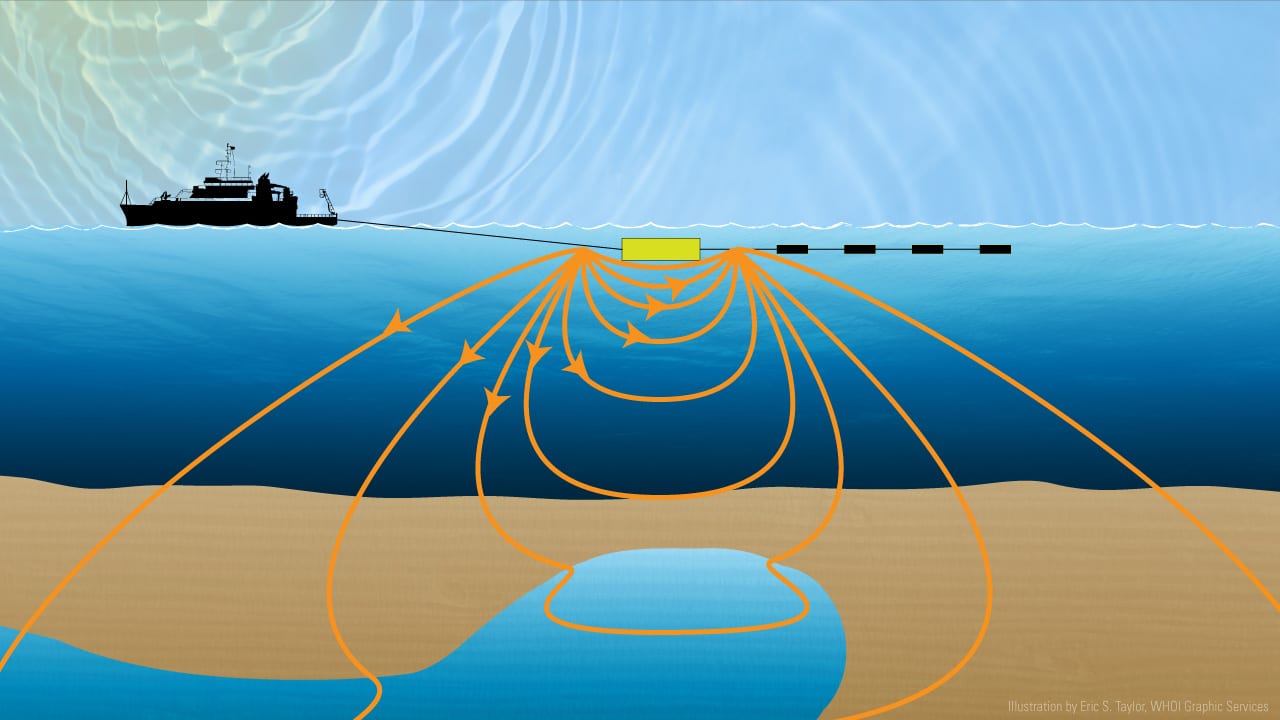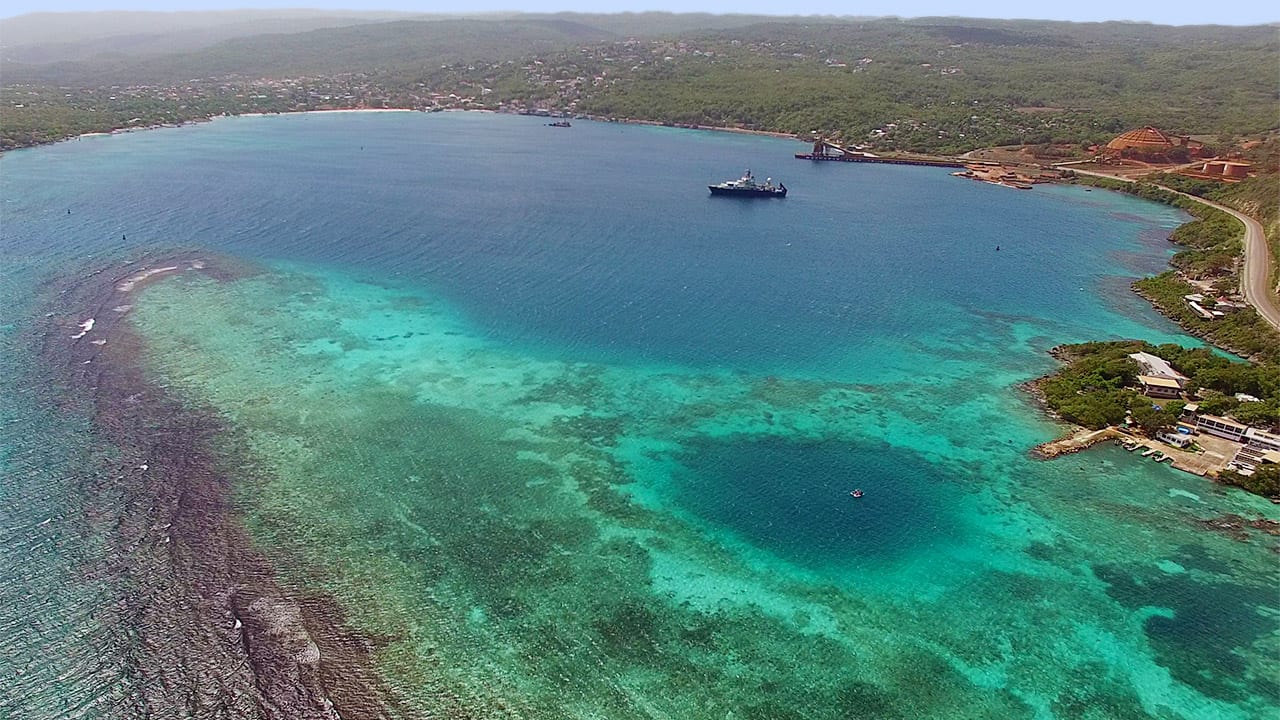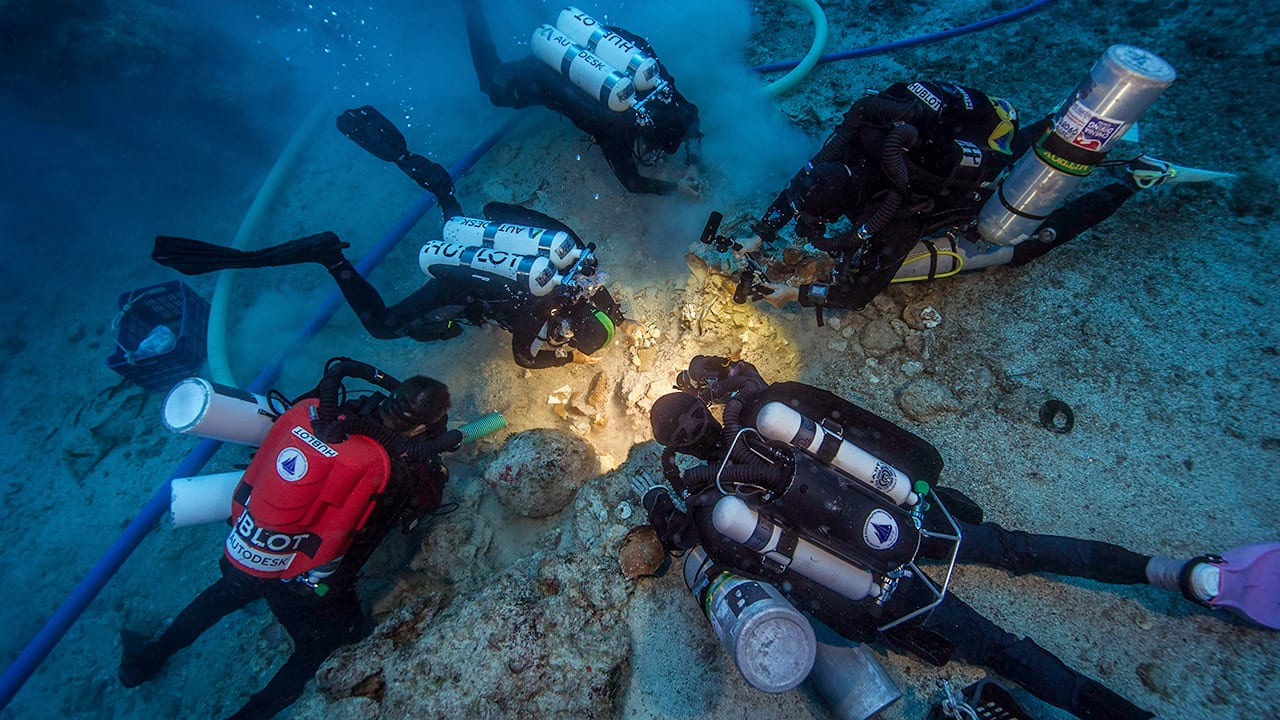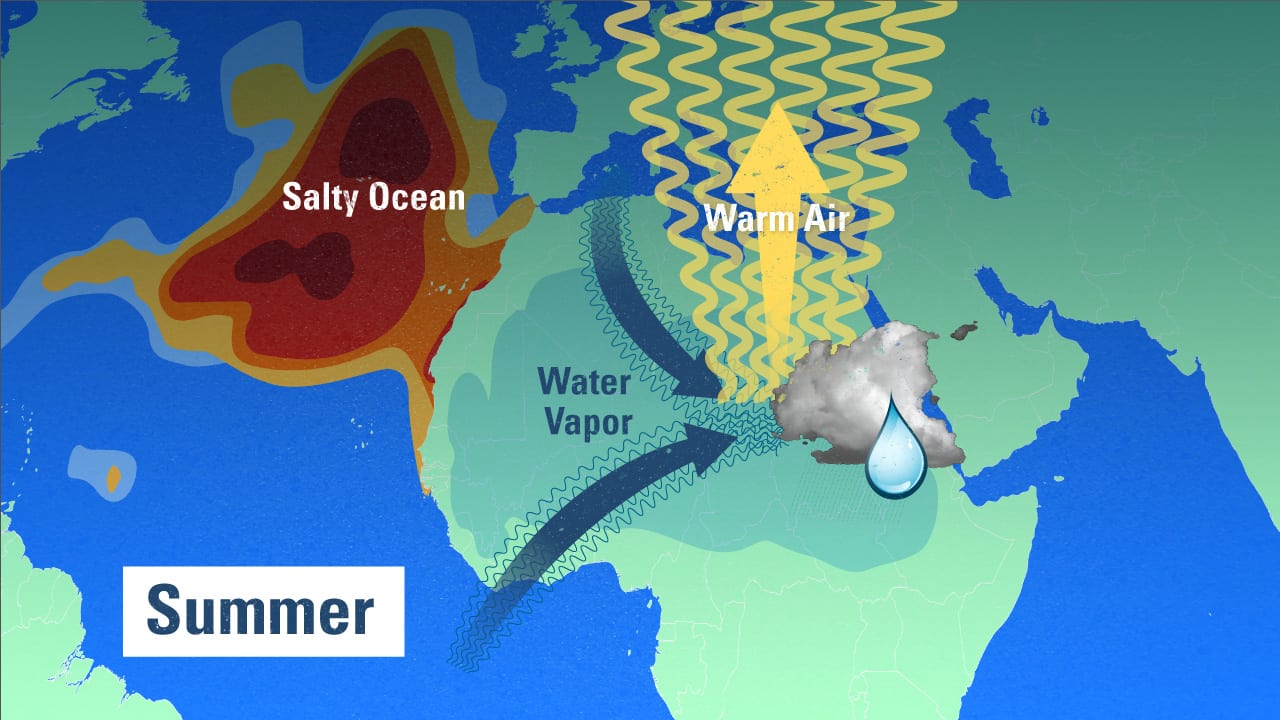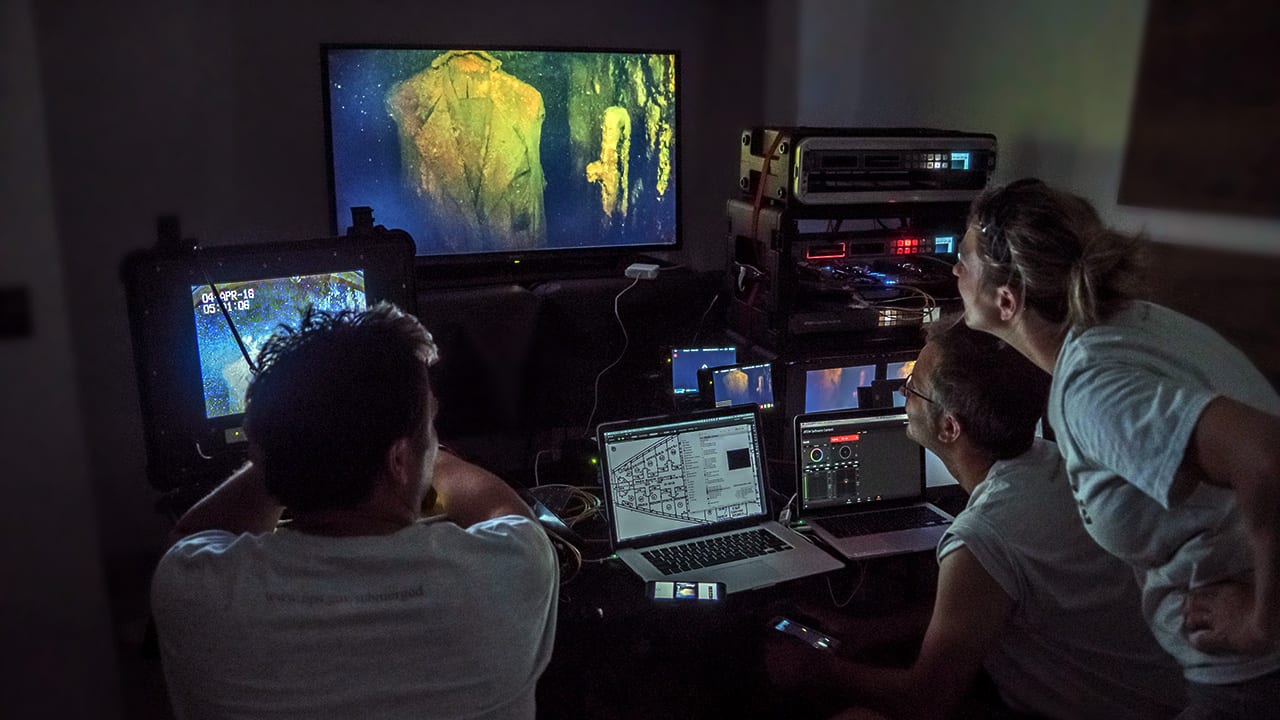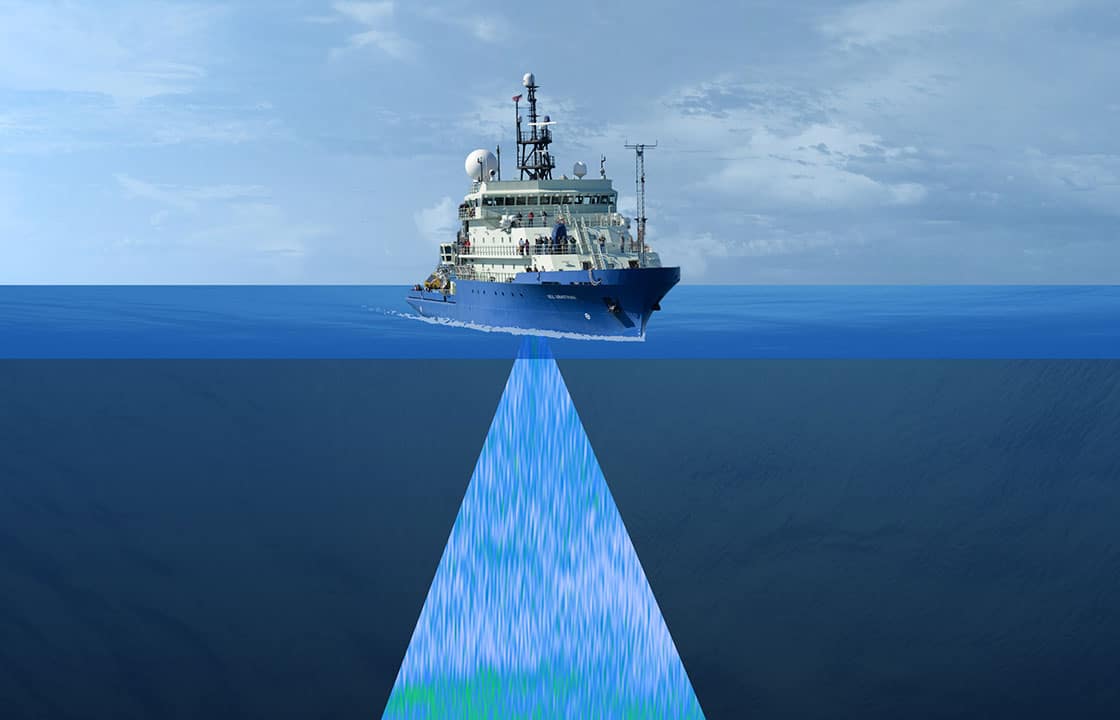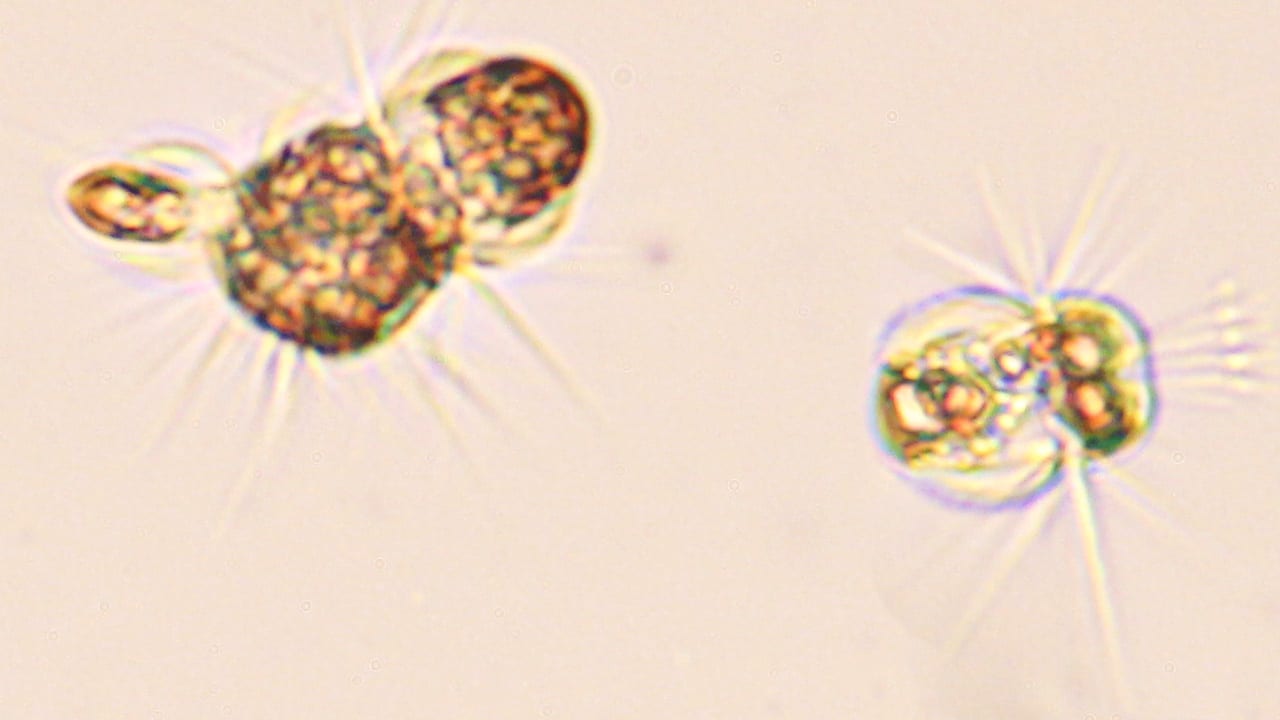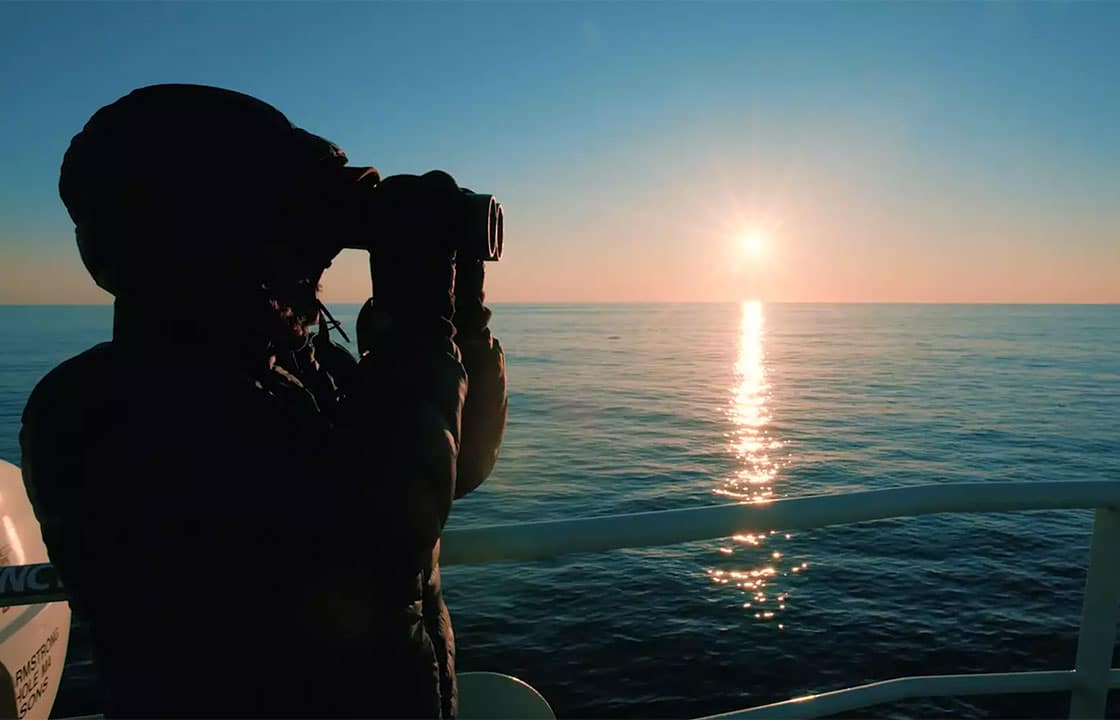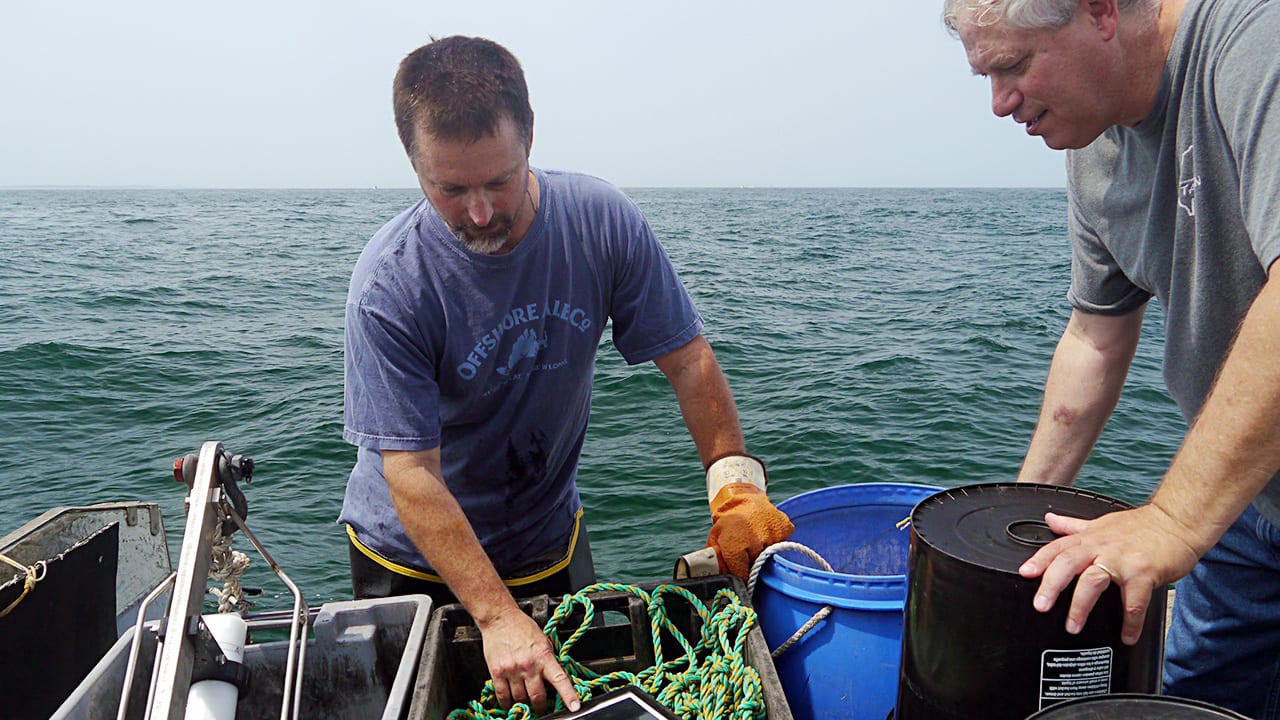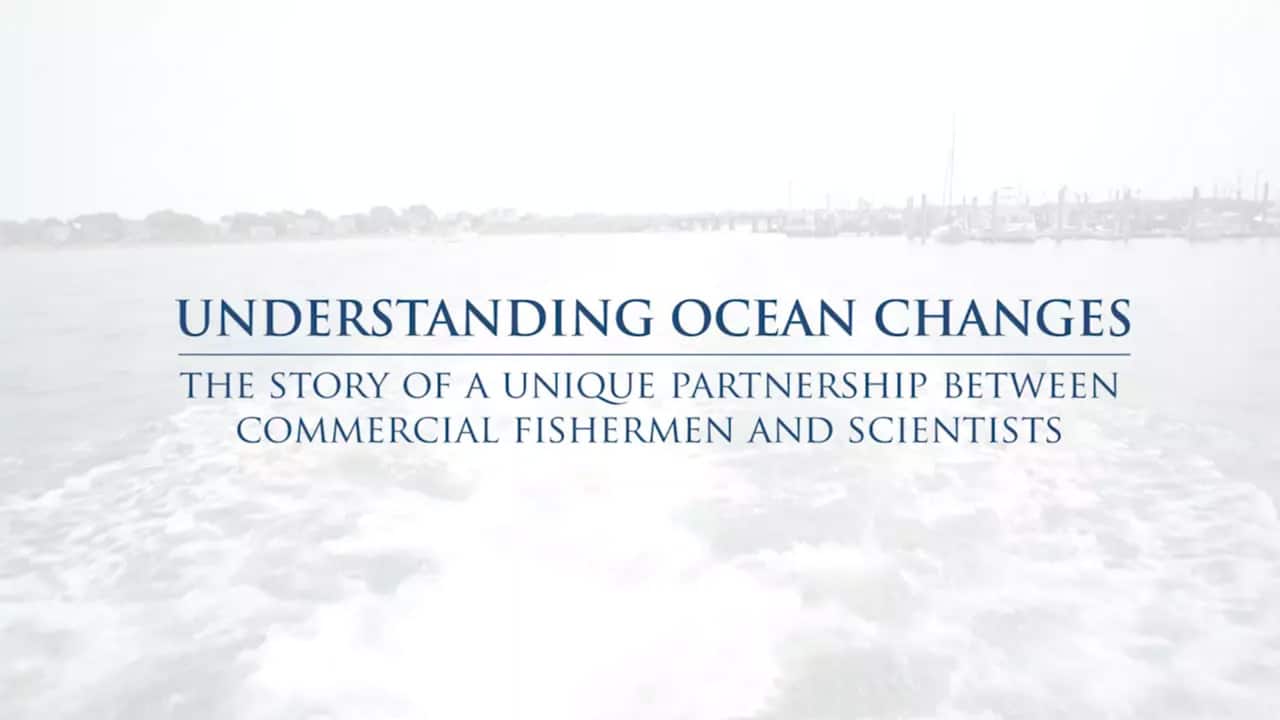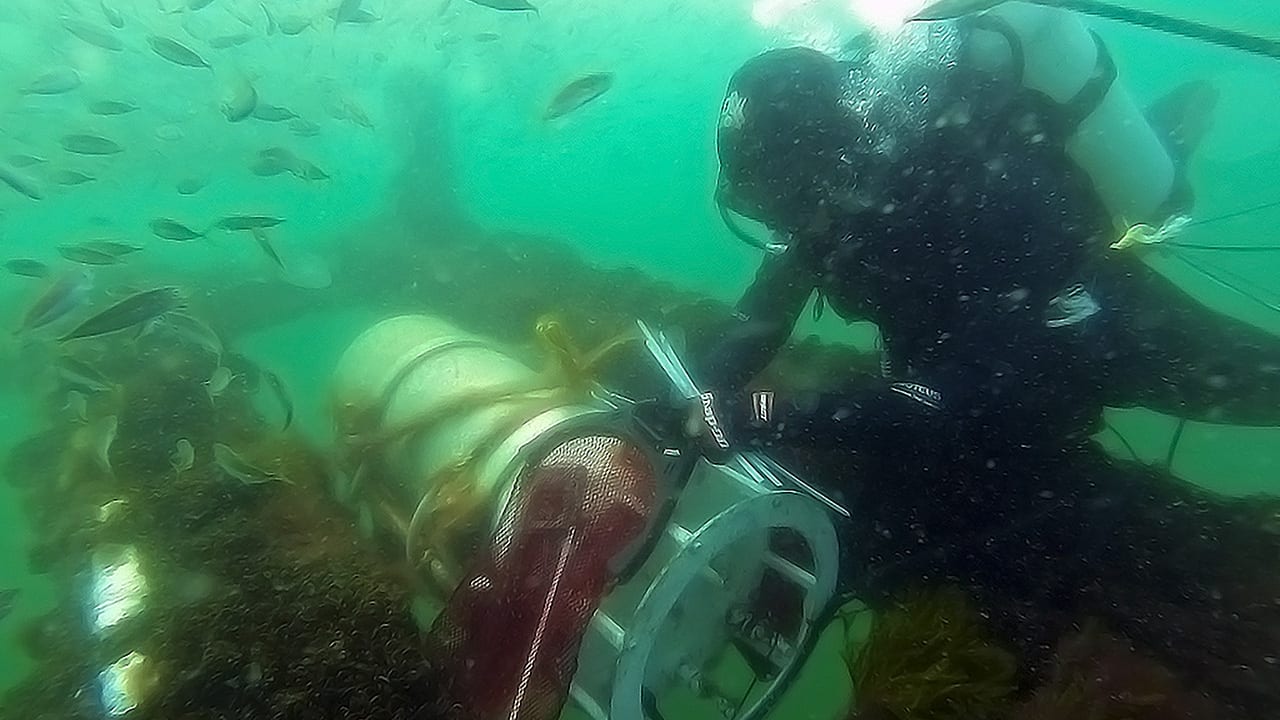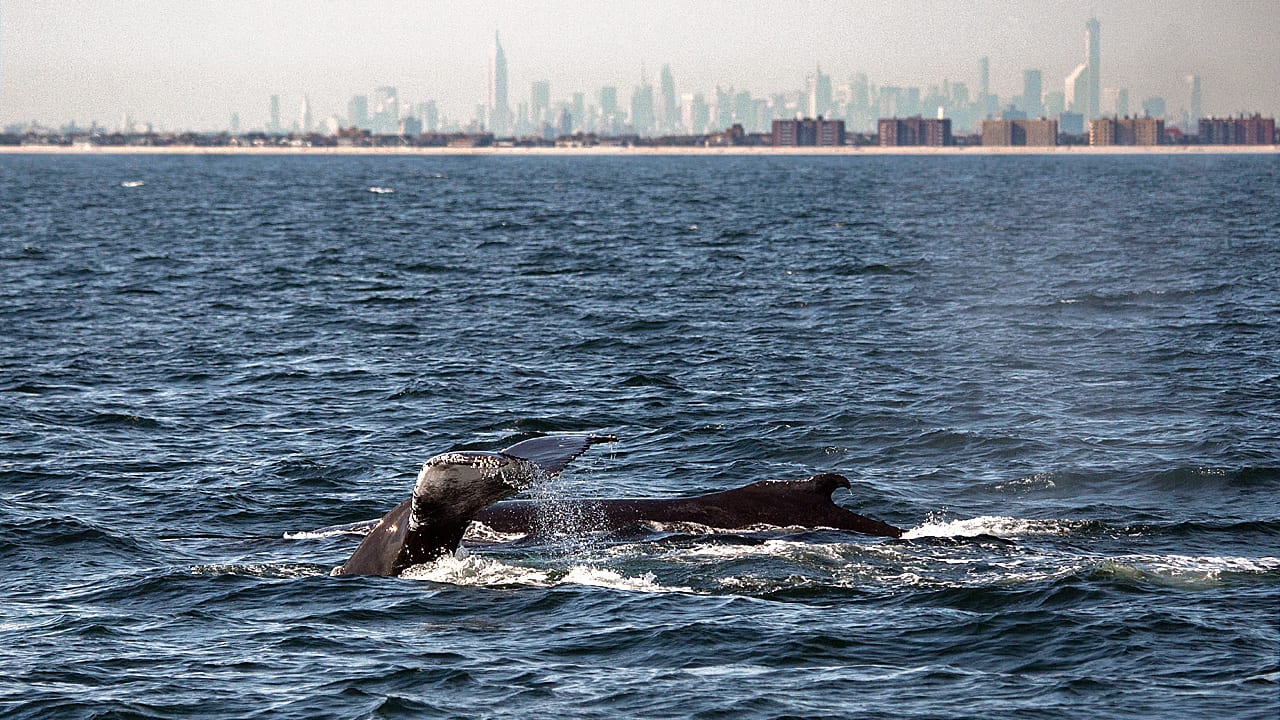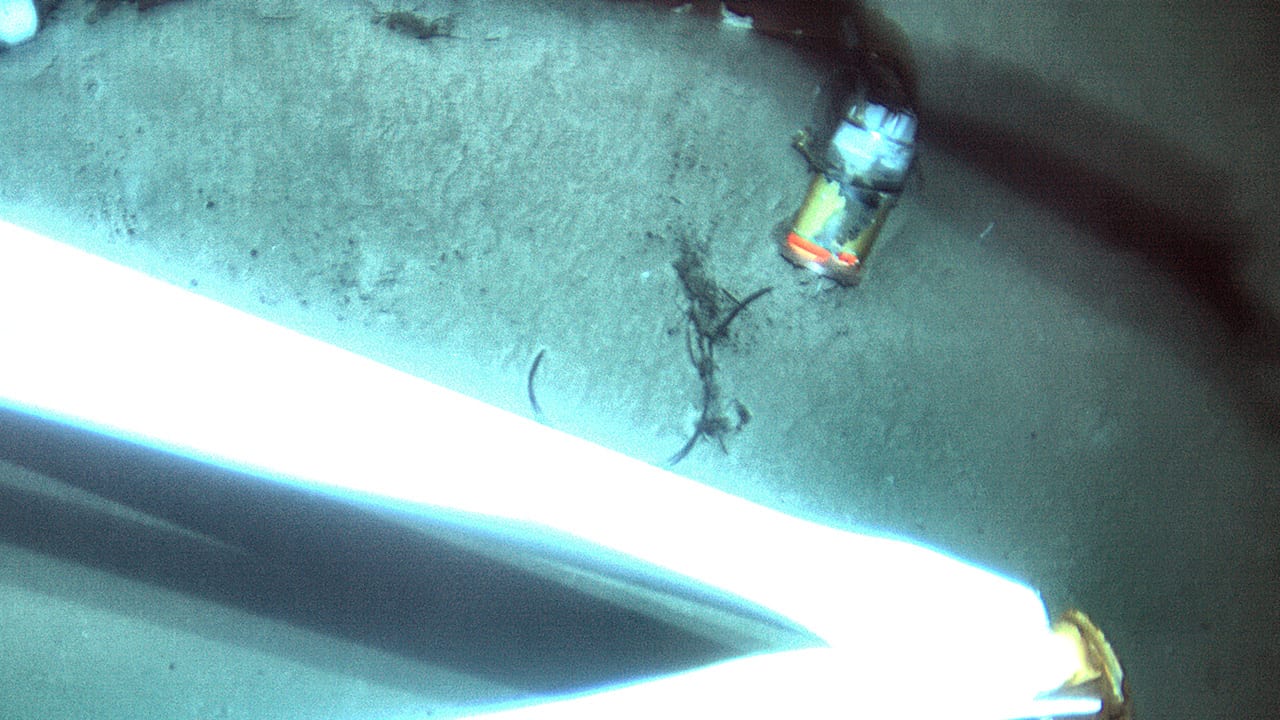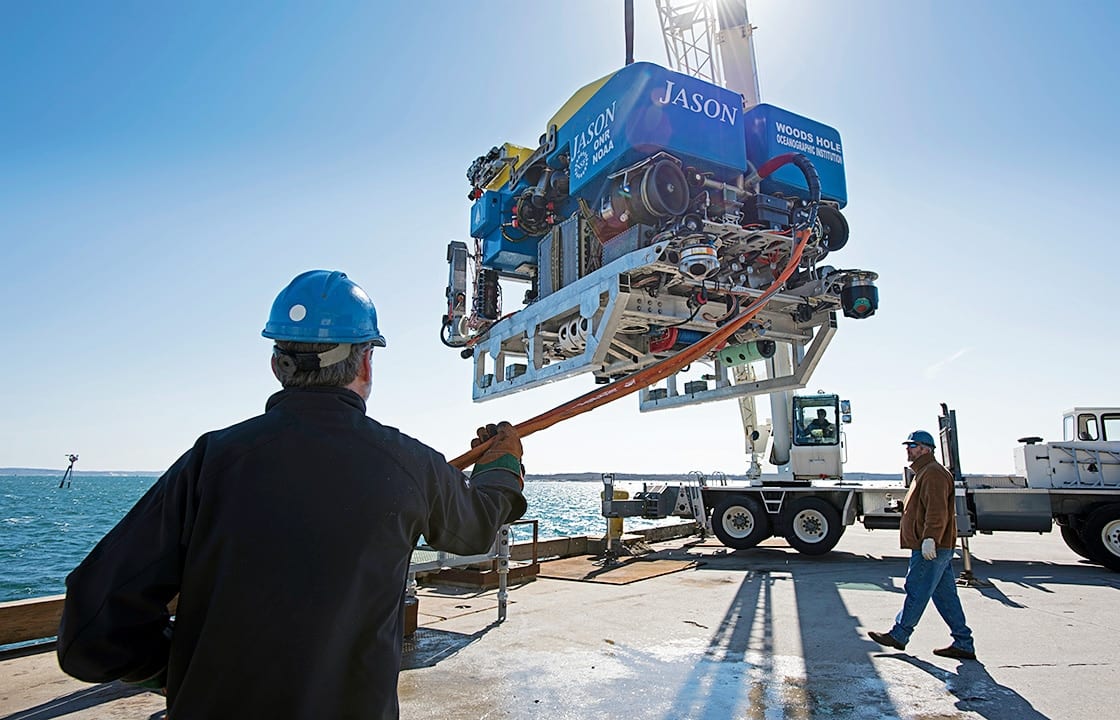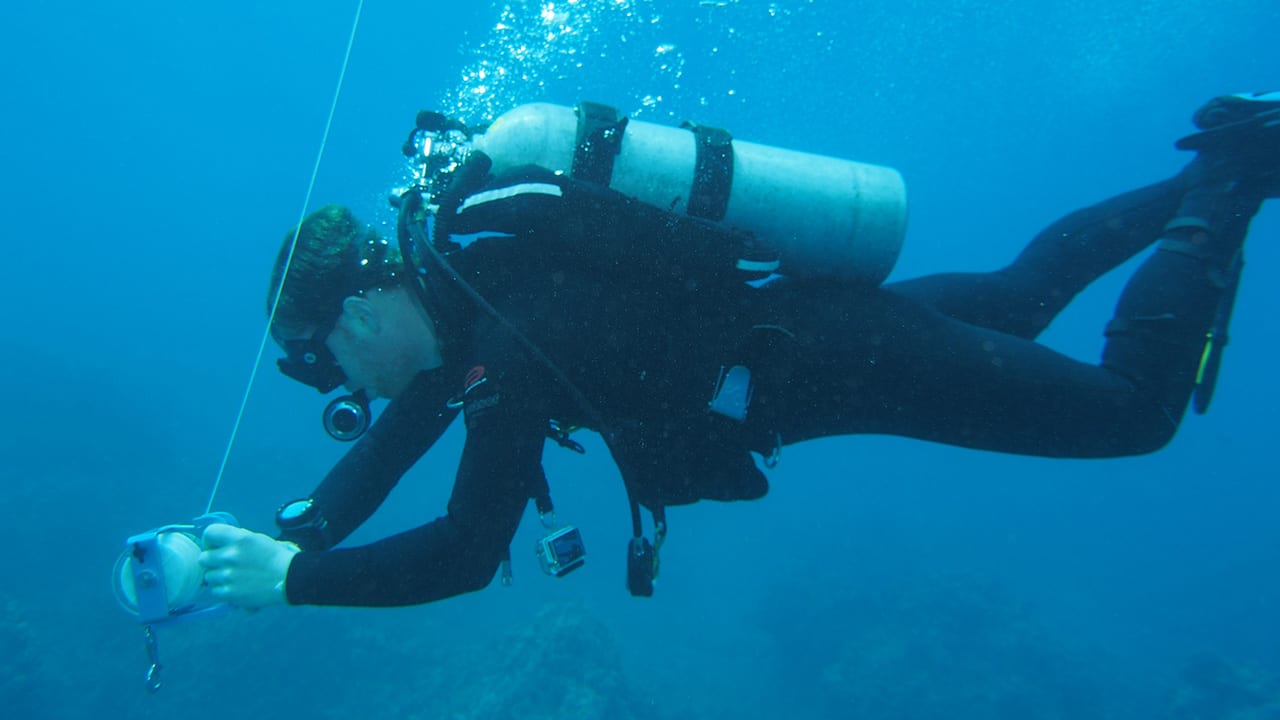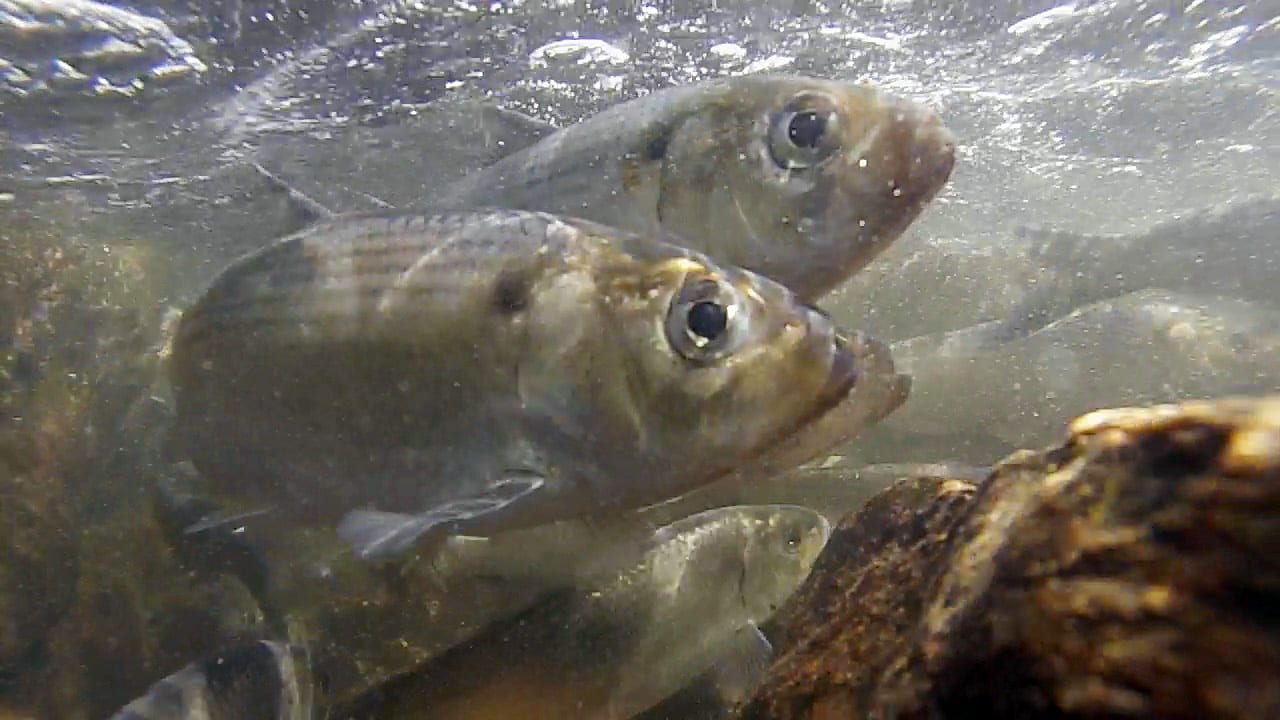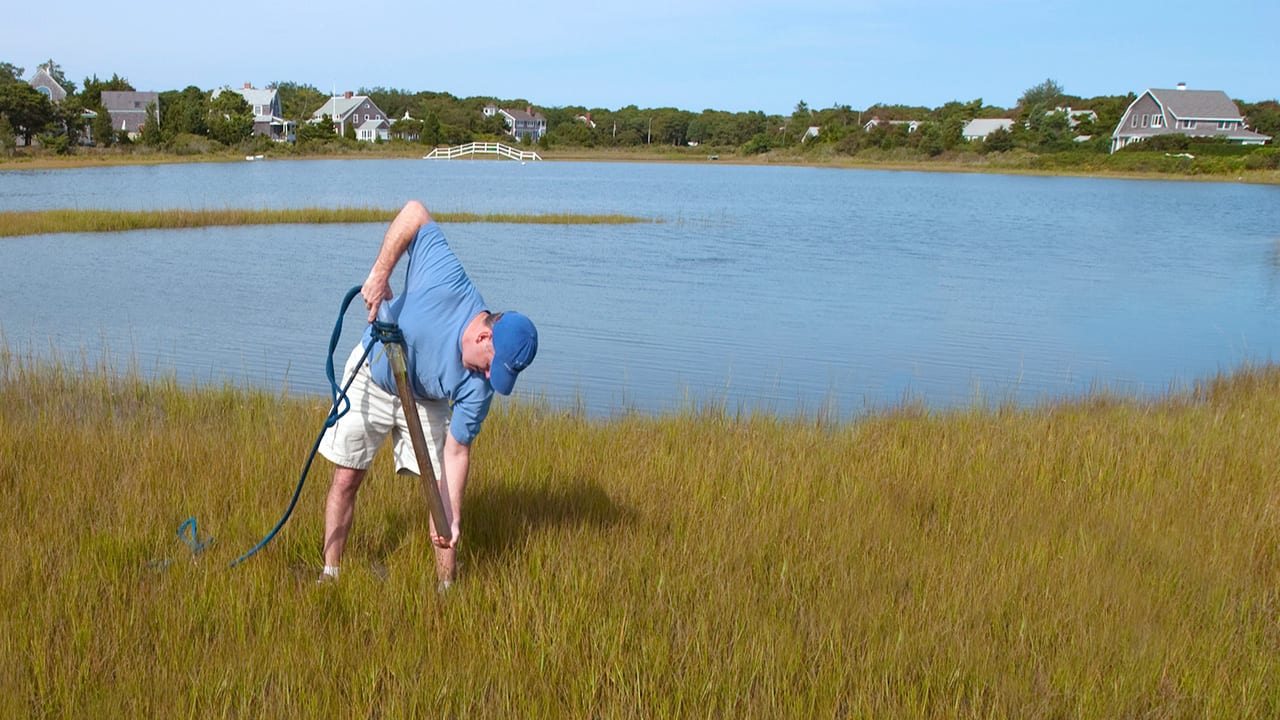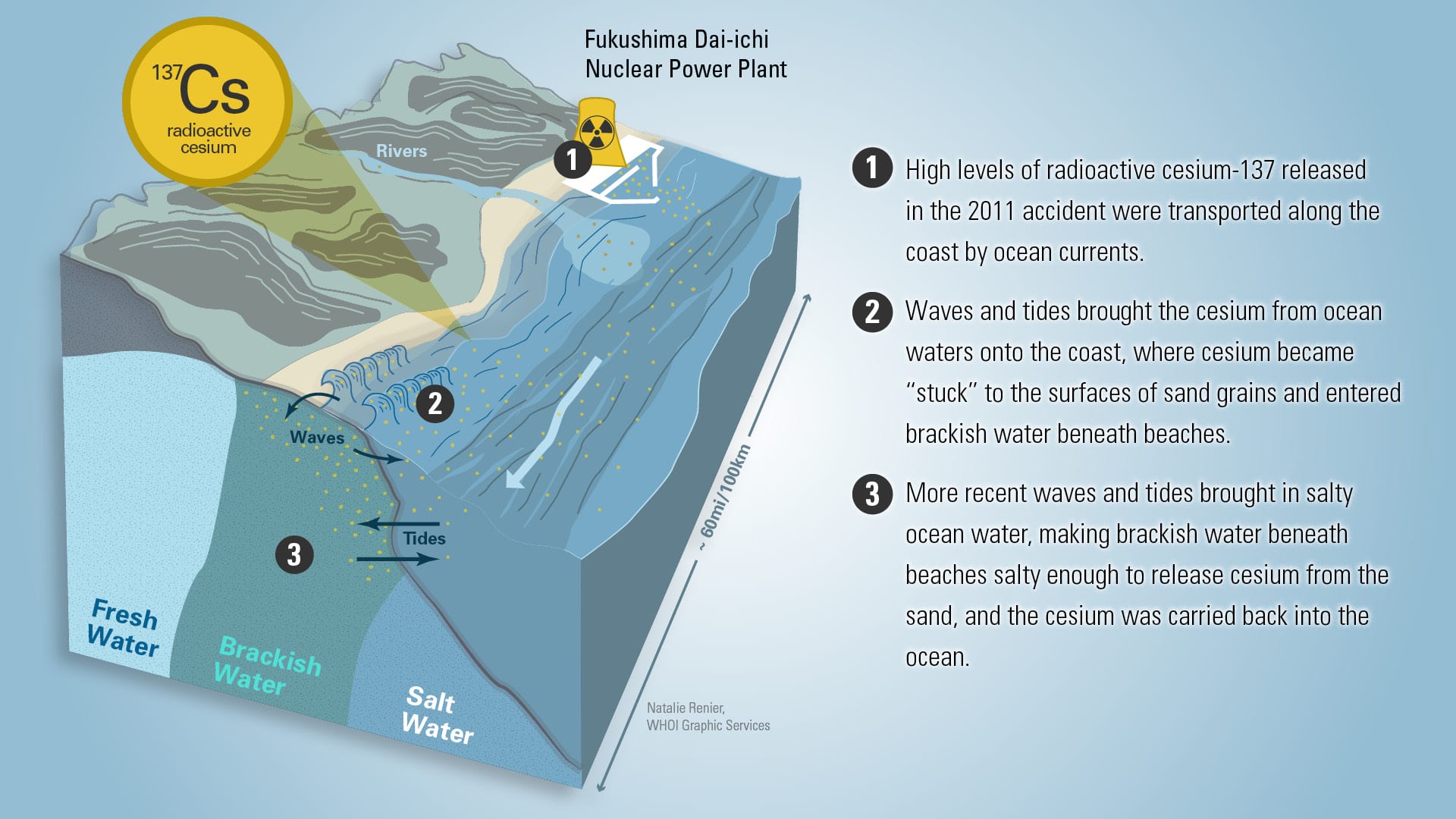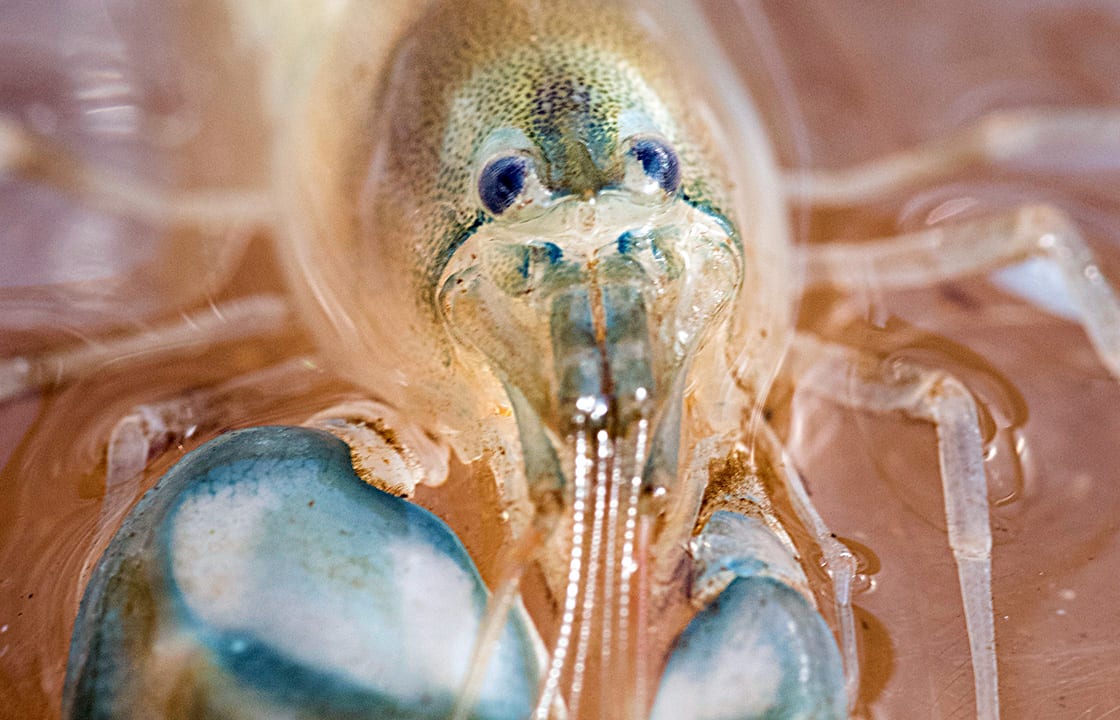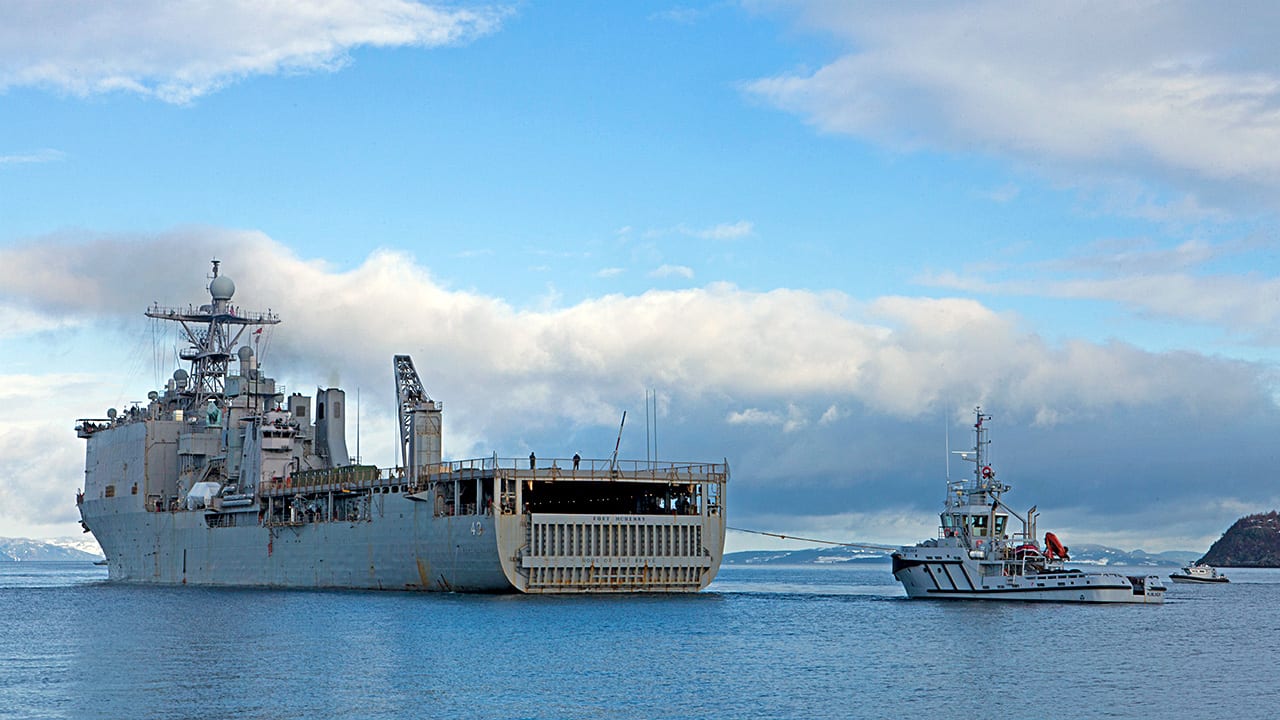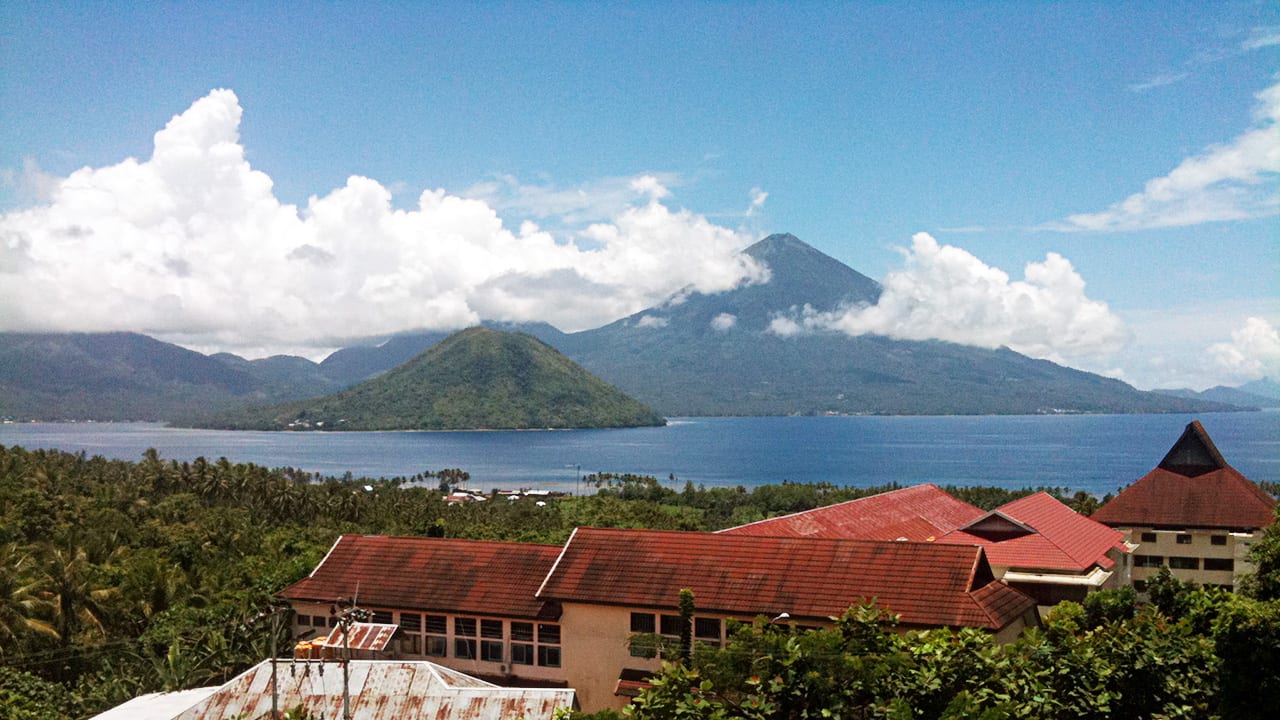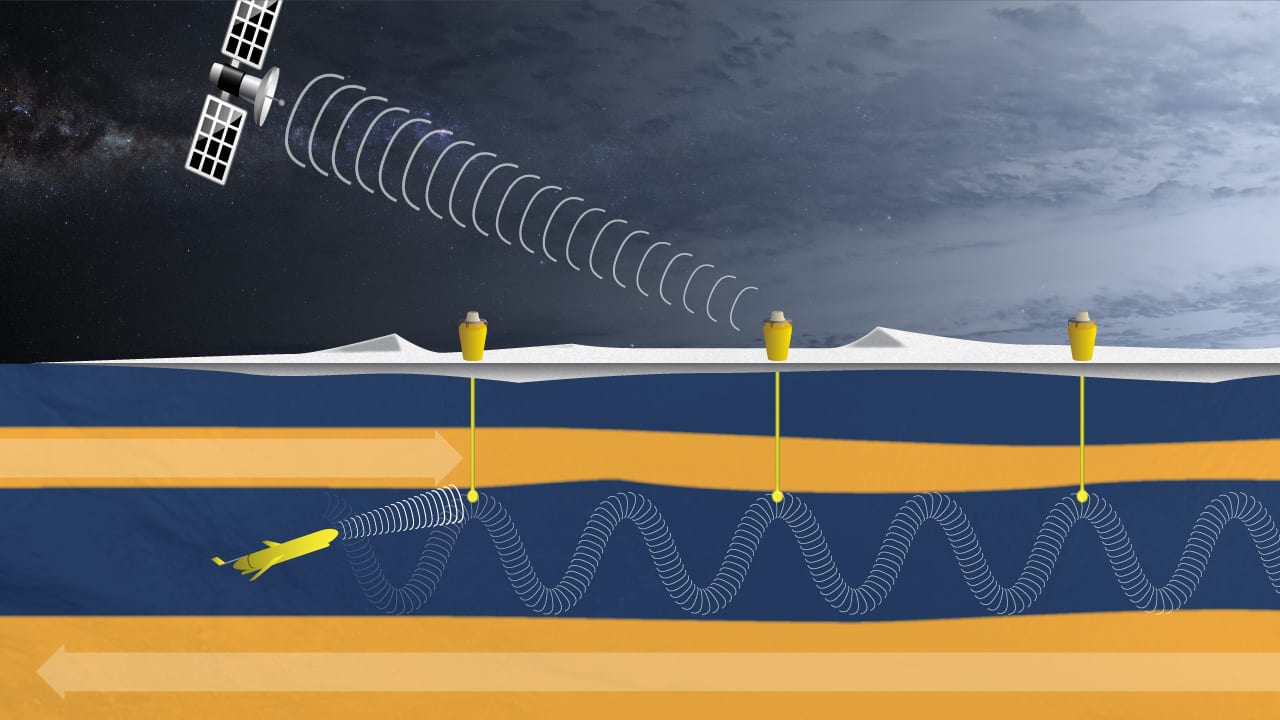Oceanus Online Archive
When the Hunter Became the Hunted
In waters off Mexico’s Guadalupe Island, Woods Hole Oceanographic Institution (WHOI) engineers deployed the REMUS SharkCam, a torpedo-shaped robotic vehicle with a special system to track and film great white…
Read MoreExtreme Climate
Extreme climatic events such as unusually severe storms and droughts can have profound consequences for life both on land and in the ocean. Woods Hole Oceanographic Institution climate scientist Caroline Ummenhofer studies the ocean’s role in the global water cycle and its effects on extreme weather and climate.
Read MoreFresh Water Below the Seafloor?
Using a new method to distinguish fresh water from oil or salt water, scientists are exploring beneath the continental shelf off New England to look for large pockets of trapped fresh water. This water may be continually filling from groundwater flowing from land or, alternatively, may have been left behind by ice ages glaciers.
Read MoreBlue Holes and Hurricanes
Scientists are digging into clues that settle into sinkholes in the seafloor to learn about hurricane patterns in the past and in the future.
Read MoreAncient Skeleton Discovered
International researchers discovered a human skeleton during ongoing excavations of a ship that sank around 65 B.C. off the Greek island of Antikythera in the Aegean Sea. It is the…
Read MoreTo Forecast Rain, Look to the Ocean
Ever since humans have existed on Earth, they have looked to the heavens to forecast rain. But more reliable clues may lie in the ocean. New research by scientists at…
Read MoreInside the Sunken USS Arizona
Mike Skowronski (above left) pilots a remotely operated vehicle into the remains of the battleship Arizona at the USS Arizona Memorial in Pearl Harbor, as Evan Kovacs and Maryann Morin…
Read MoreIlluminating the Ocean with Sound
WHOI’s new research vessel Niel Armstrong is equipped with an EK80 broadband acoustic echo sounder. Using a wide range of sound frequencies, it gives scientists the ability to identify and distinguish between…
Read MoreThe Amazing Acquired Phototroph!
There are autotrophs, such as plants, that can make their own food. There are heterotrophs, such as animals, that consume other organisms. And then there are curious organisms called mixotrophs, which can do both, switching how they get food depending on the conditions in their environment.
Read MoreThe Hotspot for Marine Life
The continental shelfbreak in the waters off New England is an area where a spectacular abundance and diversity of marine life aggregate year-round. The Pioneer Array, a part of the NSF-funded Ocean Observatories Initiative, was placed there to help scientists explore the processes that make the shelfbreak so productive.
Read MoreScientist-Fisherman Partnership
WHOI physical oceanographer Glen Gawarkiewicz is enlisting the help of local fishermen to find out how climate change is affecting water conditions along the southern New England coast.
Read MoreUnderstanding Ocean Changes
The story of a unique partnership between commercial fishermen and scientists.
Read MoreSpring Arrives Earlier in the Ocean Too
Warmer oceans are triggering phytoplankton to start their annual blooms up to four weeks earlier than usual—a signal of how climate change can have far-reaching impacts on marine ecosystems. From…
Read MoreEavesdropping on Whales
WHOI scientist Mark Baumgartner has installed a mooring in New York waters that listens for whales and sends back alerts. The prototype advance-warning system could one day help reduce shipping collisions with whales.
Read MoreWhy Did the El Faro Sink?
WHOI deep-sea vehicles and scientists played critical roles in searching the seafloor and locating the voyage data recorder of El Faro, the ship that sank in 2015 during Hurricane Joaquin, killing all 33 crew members.
Read MoreAfter Overhaul, Jason Is Stronger Than Ever
Jason, the workhorse remotely operated deep-sea vehicle, underwent a top-to-bottom overhaul that dramatically increased its capabilities.
Read MoreHow Do Larvae Find a Place to Settle Down?
It’s still a mystery: How do the tiny larvae of marine animals that hatch in the open ocean find their way to coral reefs where they settle as adults? One…
Read MoreA Big Decline of River Herring
River herring used to run up coastal streams in great numbers in springtime, returning from the ocean to spawn in fresh water. But their populations have plummeted. WHOI biologist Joel Llopiz is investigating critical gaps in understanding river herring’s larval stage just after they hatch.
Read MoreMore Floods & Higher Sea Levels
A research team predicts potentially big changes within the next century that would have significant impacts on those who live on or near the coast.
Read MoreRadioactivity Under the Beach?
Scientists have found a previously unsuspected place where radioactive material from the Fukushima Dai-ichi nuclear power plant disaster has accumulated—in sands and brackish groundwater beneath beaches up to 60 miles away.
Read MoreEavesdropping on Shrimp’s Snap Chat
At Woods Hole Oceanographic Institution, marine ecologist Ashlee Lillis is studying a tiny animal that makes one of the ocean’s loudest natural sounds. It’s called a snapping shrimp. The noise it makes dominates the underwater soundscape in many coastal regions and may have an outsized effect on other marine life.
Read MoreScientists and Navy Join Forces
When U.S. Navy were preparing a major NATO military exercise, they solicited help from WHOI scientists to plan how to mitigate potential environmental damage from oil spills.
Read MoreA New Tsunami-Warning System
After successfully testing a long-range underwater communications system that worked under Arctic Ocean ice, an engineering team at Woods Hole Oceanographic Institution (WHOI) adapted it for a very different environment—the…
Read MoreCommunicating Under Sea Ice
Researchers at Woods Hole Oceanographic Institution developed a new communication and navigation system that works over long distances under Arctic sea ice, allowing scientists to use autonomous underwater vehicles to explore the ice-covered Arctic Ocean.
Read More